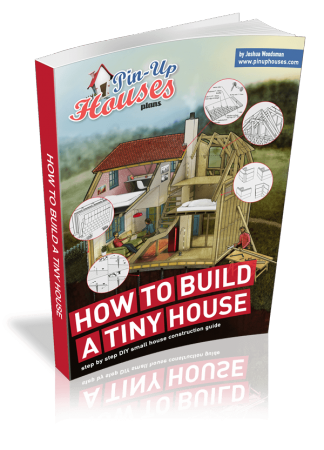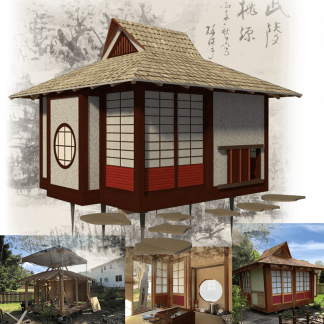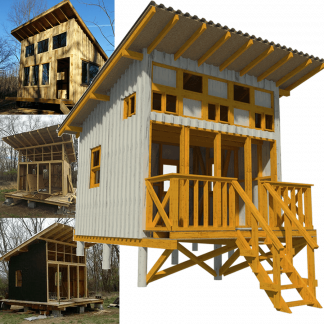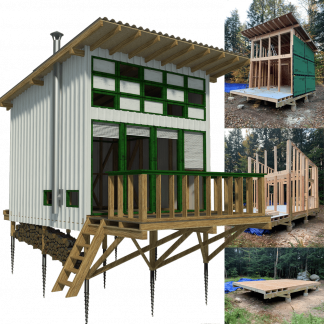As the cost of living and housing rises in the densely populated areas all over the U.S, such as California, more and more homeowners are turning to Accessory Dwelling Units (ADUs), also known as laneway homes, garden suites, or even secondary suites, as a smart solution. So if you are choosing a house for aging parents, generating rental income, or looking to provide an independent space for adult children, ADUs are here to offer you the best flexibility, customization, and amazing valuation. But if you live in a neighborhood governed by a Homeowners’ Association (HOA), adding one to your property might not be as simple as applying for a permit and breaking ground.
In many HOA communities, there seems to be a tension between private property rights and collective community rules. Multiple municipalities across the U.S loosen zoning laws and promote ADU development, whereas some HOAs remain cautious, or even resistant. This raises a crucial question for homeowners these days: Can your HOA still ban ADUs, even if the local laws say that they’re allowed?
Let’s find out the legal landscape, explore where HOA authority begins and ends, and see scenarios where ADUs are embraced, restricted, or blocked altogether. So, if you are a homeowner considering building a suite or a board member surfing through various policy updates, resolving this issue is the key to planning smart and avoiding surprises that cost a lot in the future.

Understanding What Counts as an ADU in the U.S
Before diving into the topic, let’s see if HOA can ban ADU. It’s pivotal to clarify what exactly meets the criteria as an Accessory Dwelling Unit in the U.S context. While certain definitions can vary provincially and municipally, the core concept remains the same. An ADU is a self-contained residential unit situated on the same lot as a primary home. However, not all ADUs look or work the same.
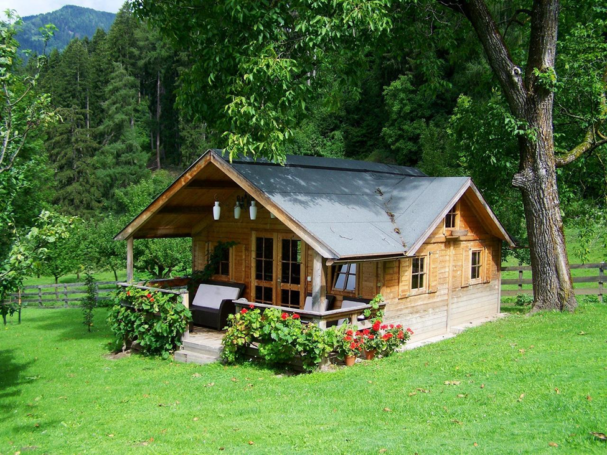
Types of ADUs Found Across U.S Neighborhoods
In cities like New York City, Houston, and Los Angeles, ADUs take on several common forms:
- Detached ADUs (Laneway Houses or Garden Suites): Separate structures at the rear or side of a property, typically built over garages or in converted sheds or small houses.
- Attached ADUs (Additions or Over-Garage Suites): Units that are physically attached to the main home but have their own entrances and full living facilities.
- Interior ADUs (Basement or In-Law Suites): Fully independent units within the main dwelling, often featuring their own kitchen, bathroom, and entrance.
Each has its own type, zoning, design, and permitting requirements, and each comes with its level of visibility and perceived disruption to a community.
The Legal Status of ADUs Is Evolving
All across the U.S, the legality of ADUs is accelerating. In California, the state has made it mandatory for all municipalities to legalize ADUs in districts already zoned for single-detached homes for quite a long time. Following the same suit, all municipalities are required to allow at least one additional unit on lots zoned for residential purposes. California, Florida, and New York are all seeing a surge in municipal bylaw changes that encourage secondary suites as a tool to combat housing shortages.
But, and this is where it gets tricky, municipal approval doesn’t always mean automatic permission in HOA communities.
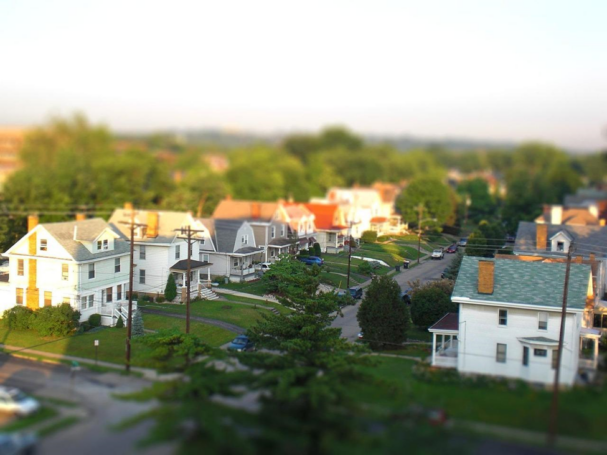
HOA Restrictions Exist in a Separate Legal Layer
Your local government may give you the green light to build an ADU, but if your property is under an HOA, you must also adhere to its covenants, conditions, and restrictions (CC&Rs). These are often more conservative and slower to update than public zoning codes. Even if city bylaws allow a backyard suite, your HOA may have outdated clauses prohibiting additional structures, limiting rentals, or requiring architectural approval that can easily be denied.
Understanding what an ADU is and the difference between public zoning and private regulation is the first step in navigating whether your HOA can say no.
The Legal Tug-of-War: Zoning vs. HOA Rules
In most U.S cities, local zoning laws permit you to build an ADU. You’d think that would be the end of the conversation, but in HOA-governed neighborhoods, the question isn’t just what the city allows, it’s what your community’s rules are for. This creates a certain grey zone where homeowners are caught between the two sets of legislative authority: Public zoning regulations and private HOA covenants.

What Municipal Zoning Laws Say
All across the U.S, municipalities are working actively to update zoning laws to encourage the construction of ADUs. For example, Toronto’s “Laneway Suites” and “Garden Suites” bylaws allow homeowners to build secondary units on most residential lots without zoning variance. Where else in Sacramento and San Diego, cities have streamlined approval for secondary and backyard suites to support housing density and affordability. These policies are a part of a broader movement to address the U.S’s housing shortages without sprawling further into undeveloped land.
In most cases, once a homeowner meets the city’s design, safety, and setback regulations, they receive a permit to proceed with construction.
Where HOAs Complicate the Picture
However, HOAs don’t operate under public zoning; they enforce private land-use restrictions. These are usually laid out in a community’s bylaws or governing documents like covenants, conditions, and restrictions (CC&Rs). These documents can contain clauses that:
- Prohibit the construction of secondary dwellings or outbuildings
- Limit the number of kitchens or separate entrances allowed on a single lot
- Restrict rental activity, especially for short-term or non-family tenants
- Require that all modifications be pre-approved by an architectural review committee
So even if your local zoning code gives you the right to build an ADU, your HOA may have the legal standing to reject your application based on its internal guidelines.
Who Has the Final Say? It Depends.
In the U.S, courts generally recognize HOAs (or strata corporations, in the case of condo-style communities) as private entities with the authority to set and enforce community-specific rules. This means that unless provincial law explicitly overrides an HOA’s restrictions, as seen in some parts of the U.S., your HOA may still be able to say no to an ADU, even if the city says yes.
This legal tug-of-war can leave homeowners stuck in the middle. Navigating it requires understanding both sets of rules and sometimes advocating for change within your HOA structure. Because even if the city’s door is open, your HOA might be guarding the gate.
Why Some HOAs Are Still Saying No to ADUs
In various cities across the U.S that push for more flexible housing options, many HOAs remain quite reluctant or outright resistant, to the point of Accessory Dwelling Units. While the reasons vary from community to community, most stem from preservation, perception, and control. So, understanding these motivational factors can help homeowners navigate the approval process more strategically.
Aesthetics and Neighborhood Uniformity
One of the major concerns for many HOAs is the visual consistency. Many communities are developed with an architectural theme or layout in mind. Adding a subtle backyard cottage, above-garage suite, or a basement unit with a separate entrance can be seen as disrupting the tailored look and feel of the neighborhood.
Boards often worry that ADUs will lead to unpredictable renovations, mismatched structures, or visible construction that lowers curb appeal. In tighter-lot communities, adding a second dwelling may limit green space or increase visible clutter, especially if not carefully designed.
To the board, even a well-constructed garden suite can feel like a slippery slope: if one homeowner adds an ADU, others may follow, and the original vision of the neighborhood may be lost.

Parking, Traffic, and Infrastructure Pressure
Another issue is the perceived strain on community resources. HOAs may argue that additional units bring more cars, garbage, and wear and tear on shared amenities like private roads, walkways, or parks.
In areas with very limited parking, this becomes a highlight of that area; a single-family home that suddenly houses two or three adult residents, each with their vehicle, can throw off the balance immediately. Some boards have highly restricted ADUs to stand by and maintain control over traffic flow and parking spots, even if the units are permissible and legal.
Rental and Occupancy Concerns
Even when HOAs don’t have any kind of objection to the construction of an ADU, they may reserve the use, especially when talking about rental. To some extent, multiple associations worry that allowing rentals, especially the ones that are in the short term, could lead to reduced accountability or an increase in noise pollution.
Across all communities, HOA bylaws have permitted only owner-occupied homes or long-term rentals to family members. Adding an ADU, even if you see it as a mortgage helper, can be seen as inviting strangers into your neighbourhood, something that boards are hesitant to show.

Fear of Precedent
Prevention is better than a cure. Some boards may be cautious simply because they are insecure about setting a precedent. If they allow one ADU, they feel obliged to approve others. Without setting a clear policy or standard, the process can become inconsistent or invite certain conflict.
Can You Challenge Your HOA’s Decision on ADUs?
If your municipality allows ADUs but your HOA shuts down your application, you’re not necessarily out of options. While HOAs have the right to set stricter boundaries than the local zoning laws, that authority has limits, and property owners who are educated well on strategic and persistent tactics can often lead to open-door compromise or even some sort of reform.
Step One: Review Your Governing Documents Carefully
Before mounting any challenge, thoroughly review your HOA’s declaration, bylaws, and architectural guidelines. These documents outline what is and isn’t permitted within your community and, more importantly, how decisions are made.
Look for clauses related to:
- Detached structures
- Building height or footprint
- Secondary entrances
- Rental or occupancy restrictions
- Architectural review processes
If the rules don’t ban ADUs or if they’re outdated or vaguely worded, you may have room to push back or request clarification.

Step Two: Submit a Detailed, Compliant Proposal
If your documents don’t completely prohibit ADUs, prepare a professional, well-documented proposal. Include site plans, renderings, zoning approvals, noise and traffic assessments, and examples from nearby communities. The more polished your submission, the more seriously it will be considered.
Make it clear how your ADU:
- Matches the design aesthetic of your main home
- Will be used (family housing, not short-term rental)
- Includes discreet access, parking, and landscaping
- Complies entirely with municipal codes and permits
Many HOAs fear “what-if” scenarios. Your job is to show that your plan is low-impact, neighbor-friendly, and aligns with the community’s values.

Step Three: Engage the Community and Seek Reform if Needed
If your application is denied, you can escalate the conversation. Speak at HOA meetings, gather support from neighbors, and request a formal vote to amend restrictive policies. Especially in newer or growing communities, HOAs are often open to updating outdated guidelines if the request is thoughtful and supported.

Here’s a quick breakdown of how municipal and HOA powers compare:
| Authority | Municipality | HOA (Homeowners’ Association) |
| Zoning/Permits | Grants permission to build ADUs | May require additional design review |
| Construction Rules | Enforces building codes & safety | Enforces architectural style & size limits |
| Rental Regulations | May allow short- or long-term rentals | Can restrict rental use, guests, or occupancy |
| Final Say on Aesthetics | Minimal, unless heritage zone | Can deny based on visual disruption |
If your HOA remains inflexible, mediation or legal consultation may be your next step, especially if the board is applying its rules inconsistently or in a way that contradicts provincial human rights protections (e.g., for multi-generational housing).
Challenging your HOA isn’t about confrontation but collaboration and clarity. With community support and a well-reasoned case, you can often turn a firm “no” into a fair “let’s talk.”
Why Some HOAs Are Beginning to Embrace ADUs
While many HOAs are still hesitant about Accessory Dwelling Units, a growing number are rethinking their stance, and for good reason. As U.S cities face mounting pressure to address housing shortages, affordability, and multi-generational needs, ADUs are increasingly viewed not as threats to neighborhood order but as tools for stability and long-term value.
Responding to Demographic and Economic Change
The traditional single-family household model is no longer the norm in many suburban communities. Parents are moving in with adult children, young adults stay home longer, and families are looking for ways to support one another while preserving privacy and independence.
ADUs offer a flexible solution: a space for grandparents, a suite for adult children, or a rental to offset rising mortgage payments. As more homeowners inquire about these options, HOAs are beginning to recognize that resisting ADUs may put them at odds with the residents they were created to serve.
Avoiding Market Obsolescence
A strategic reason for HOAs to embrace ADUs is to protect property values in an evolving market as provincial legislation and municipal zoning continue to evolve in favor of increased density; neighborhoods that rigidly resist change risk being perceived as outdated or inflexible.
Some HOAs are updating their architectural guidelines to allow ADUs that meet specific design criteria, such as matching rooflines, exterior finishes, and footprint ratios, to ensure visual harmony while allowing homeowners to adapt to modern needs.
In doing so, these communities stay competitive in the real estate market, attracting buyers who see flexibility and future-proofing as valuable assets.
Creating Smart Policy Instead of Blanket Bans
Rather than relying on broad restrictions, progressive HOAs implement ADU-specific policies that balance control and accommodation. These may include:
- Limiting the size or height of detached ADUs
- Requiring long-term (not short-term) occupancy
- Capping the number of unrelated tenants
- Enforcing landscape screening or private entry placement
These targeted policies allow HOAs to maintain the neighborhood’s look and feel without fully denying homeowners the right to adapt their property. This proactive approach has often reduced conflict, increased community satisfaction, and sparked renewed interest in HOA governance participation.
Make it easier on your entire community by using a digital platform like HOA Central to streamline architectural change requests, such as applications for secondary suites, exterior renovations, or landscaping changes. Instead of completely relying on paper forms or scattered emails, homeowners can now submit their request through a centralized system, track, review, and respond in one place.
When managed with clear standards, ADUs aren’t just acceptable, they’re a strategic way to grow while staying rooted in community values.
Finding Common Ground on ADUs in HOA Communities
As U.S housing landscapes evolve, Accessory Dwelling Units are no longer fringe ideas but fixtures of flexible, future-ready living.
For homeowners, they offer independence, financial relief, and family support. For HOAs, they can represent both a challenge and an opportunity. It’s true that some associations still push back. But things are changing towards adaptation rather than restriction.
With clear communication, policy reform, and thoughtful design, ADUs can work within even the most structured communities. At their best, they don’t just add space, they strengthen neighborhoods. And in the face of changing demographics, that’s exactly the kind of growth HOAs should aim to support.


